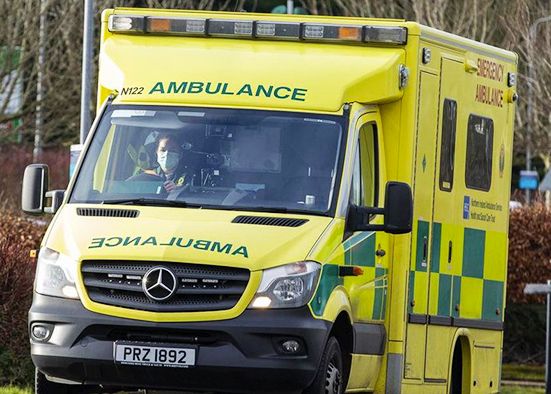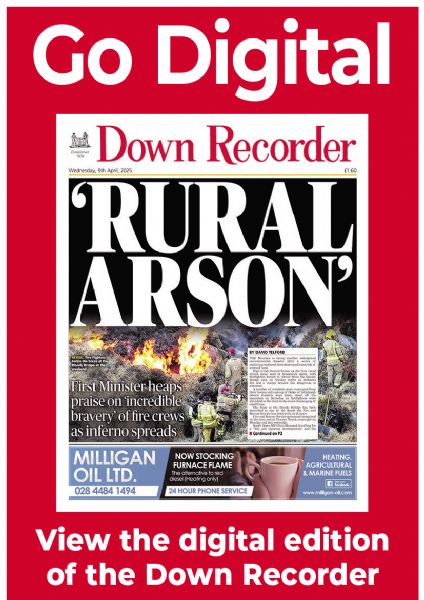Ambulance Service apologises for delays
Ambulance Service apologises for delays
30 August 2023

A SPOTLIGHT has been shone on “serious delays” in emergency ambulance response times across the district.
A Freedom of Information request has led to the publication of response times for the Downpatrick, Newcastle and Castlewellan areas for the first four months of this year.
The Ambulance Service said the pressures the organisation is currently facing has resulted in some “serious delays” for which it is sorry, explaining that regrettably, response times to patients whose clinical need is less urgent will be longer than might be reasonably expected.
The Freedom of Information (FoI) request sought average response times for category one calls which are deemed the highest category of medical emergency that must be dealt with within eight minutes and within 15 minutes on at least nine of ten times.
Category one calls are classified as life-threatening, with patients in need of immediate intervention and or resuscitation.
The FoI request sought the longest individual response times for all three local areas and drilling down into the data it emerges that in Downpatrick, the response time averages ranged from 10 minutes and 25 seconds in February to 14 minutes and 15 seconds in April.
The longest recorded response time was 52 minutes and five seconds.
In Newcastle, average response times ranged from 14 minutes and 35 seconds in March to 22 minutes
and 47 seconds in January, with the longest response time also recorded in March — 44 minutes and 49 seconds.
In Castlewellan, response time averages ranged from 14 minutes 58 seconds in January to 20 minutes, 24 seconds the following month. The longest overall response time was 33 minutes, 57 seconds.
The Ambulance Service said it operates a “clinical triage system” to ensure the most critically ill or urgent calls receive the most immediate response.
In a detailed statement, the organisation said it has asked the public to consider alternatives to 999, including, where clinically appropriate, self-transport to hospital to assist in dealing with the pressures the service is currently experiencing.
The Ambulance Service said that regrettably, response times to those patients whose clinical need is less urgent will be longer than might be expected by patients and their carers.
“We understand how stressful and upsetting it can be waiting for an ambulance that is taking longer than might reasonably be expected. It is not the service that we want to provide,” the statement continues.
The Ambulance Service said it always tries to respond to every call as quickly as possible and will continue to prioritise those calls which are immediately life threatening.
It also explained that people who have dialled 999 are asked not to make follow up calls to check on the arrival time of an ambulance as this “inhibits” its ability to respond to other calls waiting to report potentially life-threatening emergencies.
“At all times, NIAS will seek to respond to all calls in the shortest possible time,” the statement continues.
“Additionally, highly skilled paramedics within our control centre are available to give advice to patients with less urgent clinical needs, advising them of options other than ambulance or emergency department (ED) attendance.
“These paramedics are an invaluable resource within our service delivery, as they often ensure that ambulance crews are not tied up unnecessarily with calls for which alternatives exist. NIAS crews are also trained to consider if patients, to whom they have attended, would be better suited by options other than ED attendance.”
The organisation said the so-called “see and treat” protocol assists greatly in ensuring the earliest availability of crews to respond to other emergencies.
The statement continues: “It was highlighted that NIAS has previously advised through media outlets and social media channels of the challenges we face on a daily basis in responding to 999 calls, and have, as we do now, asked for patience from those calling.
“Like many areas of health and social care, the demand for our services exceeds the capacity we have to respond in a timely manner. An independent, demand/capacity review has indicated that NIAS requires an uplift of more than 300 operational staff to cope with current and projected demand on the service.
“NIAS is currently working with the Department of Health to progress a business case, which recommends a multi-year investment plan to provide all the staff, fleet and accommodation required to sustain delivery and performance.”
The organisation said that in the meantime, it continues to recruit and train as many staff as possible within available resources and to prioritise calls in line with the clinical response model targets.
It says that some of the other challenges facing NIAS are “also being, experienced across the other five health and social care trusts, and this can impact upon the ability of NIAS crews to handover patients at EDs”.
The statement adds: “These delays in ambulance turnaround times impact-greatly on the number of crews we have available to respond, in a timely manner, to emergencies in the community and we continue to work with colleagues across the health and social care system to find solutions to these issues.”


